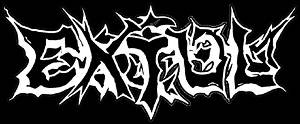Combining rhythm and melody EXTOL draw their influences from many different genres while remaining true to their strong taste for extreme music. Putting emotion into motion the Oslo-based five-piece developed a diverse sound shortly after forming in 1994. Creativity materialized on their debut-album Burial (1998, Endtime Productions), which displayed three characteristics that would soon become traditional EXTOL trademarks: technical precision, wit and energy. Ole Børud, Eystein Holm and the three founding cousins, Christer Espevoll, David Husvik and Peter Espevoll, carried out the albums' recording. Burial was highly acclaimed not only in their home-territory Norway, but also abroad, released on Solid State Records in the USA. EXTOL quickly followed up this up by releasing the Mesmerized EP in 1999, using the same artistic concept and once again a cover painting by Kristian Wåhlin (e.g. Emperor, Tiamat, At The Gates). Prior to a promotional tour across the USA, bassist Eystein Holm left the band, but was instantly replaced by Tor Magne Glidje from the Norwegian black-metal cult-act Lengsel. Very quickly EXTOL became a household name recognized and appreciated for their unique musicianship and spectacular shows. Clubs around Europe and the USA (in particular) were frequently targeted as platforms for EXTOL's intense live shows and in-your-face performance. In 2000, EXTOL released their second full-length masterpiece the highly anticipated Undeceived. Showing a refined EXTOL, clearly influenced by progressive bands like Rush, King's X and Cynic, the band returned heavier than ever. Soon after guitarist/vocalist Ole Børud left the band to focus on other projects. Just before touring the USA again, John Robert Mjåland (also from Lengsel) stepped in as support. The next year EXTOL recorded the Paralysis EP following Undeceived's dark vein. Upon fulfilling their obligations with Endtime Productions, in 2002 the band inked a deal with Century Media Records. Shortly after Undeceived was released across Europe guitarist Tor Magne Glidje decided to leave the band and concentrate on the super-energetic rock band Ganglión, so former guitarist Ole Børud re-entered the band. In January 2003 EXTOL recorded their critically acclaimed album Synergy, a much faster, more old-school, extreme and progressive album, with cover art by the renowned artist Hugh Syme (Rush, Aerosmith, Megadeth, Fates Warning etc.). After its release in May 2003 thrash Synergy was unleashed upon the world as the band toured the USA with Demon Hunter and The Agony Scene, and touring Europe with Swedish progressive doom-masters Opeth. Six months later EXTOL went through a dramatic unforeseen line-change. Both guitarists left the band: Christer and Ole decided that the commitment to the band had become too demanding. Before long EXTOL re-discovered Tor Magne Glidje and brother in crime Ole Halvard Sveen, the masterminds behind the abovementioned Ganglión and Lengsel. Their combined musical aptitude and contributions have played an important role in EXTOL's musical direction. Unlike ghosts who return to their haunts, EXTOL have embarked on a new era with Blueprint (short for its full title The Blueprint Dives). During the summer of 2004 the new line-up produced the band's fourth full-length album at Oslo's Toproom Studios with Børge Finstad (Mayhem, Borknagar) and then travelled to Antfarm Studios in Aarhus, Denmark to mix and master the album with Tue Madsen (The Haunted, Mnemic, Heaven Shall Burn). Seattle's design-collective Asterik Studios (Poison The Well, Blindside, Zao, Open Hand, Bleeding Through) provided the album's eye catching visual representation. As always, EXTOL continue to explore their high musical skills and visions, but here in a more straightforward and tangible way than on Synergy. After a decade of song writing, Blueprint contains the band's most diverse material and without a doubt EXTOL's heaviest and most energetic sound.
Source: Label Officiel: http://www.centurymedia.com


